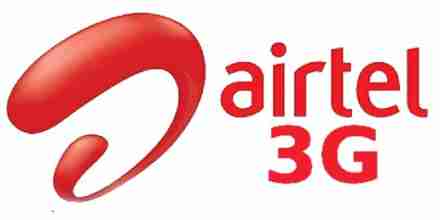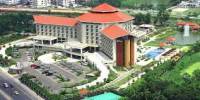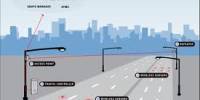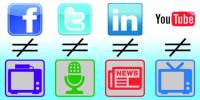The Future Success Factor for Airtel in Bangladesh
The telecommunication industry is one of the prominent industries in Bangladesh. It is contributing a large portion in our economy. This report includes the evolution of telecommunication industry in Bangladesh and how it is developing time to time. Airtel Bangladesh is the newest telecommunication operator in Bangladesh which is going to launch 3G internet service. Airtel 3G and its capability of improving human life is described in this report.
3G internet means 3rd Generation internet which is very new to Bangladesh. Only Teletalk has launched it but it wasn’t a big success as earlier in the time of 2G, Teletalk has failed to grab the attention of consumer. Though Airtel Bangladesh is new to industry but in a very short time its has grabbed the attention of mobile phone users specially young starts and teenagers who intended to stay connected all the time through mobile phone and internet.
Internet is a valuable part of VAS (Value Added Service) which is currently known as the heart of every telecommunication operator. Each and every single service without calling is a Value Added Service. Starting from sms to internet, everything is a VAS. To stay in the race of being the leader, it’s necessary to keep the calling rate and other rates low. Offering new and unique services makes the operator exclusive to the eye of user. Currently 3G is the new technology in Bangladesh as telecommunication operators were serving 2G till now. Though already 4G has taken place in other countries.
Here in this report, it’s been discussed that Airtel 3G is going to offer some useful VAS which is going to change the experience of using a mobile phone. A survey is being made on this issue and the result is being complied to show that if Airtel can promise better 3G services then it can turn into a success factor for Airtel Bangladesh.
Finally some suggestion have been made about the issues those are hampering the success of Airtel Bangladesh.
Introduction:
Telecommunication industry is currently one of the fastest growing industries in Bangladesh. Mobile phone now a day has become a daily necessity to those who use it regularly. Even though if one does not use it regularly, it’s always a way of communication in terms of long distance for them.
Telecommunication Company has emerged from basic calling system and currently it’s a compact solution for almost everything. Mobile phone operators made world so small that one can get any communication solution by a single touch or click. There are currently 6 operators who are fighting against each other to get in to the top position in the industry. The first ever mobile operator company was Citycell who launched mobile phone service in Bangladesh. The 6 Operators are Grameen Phone, Banglalink, Robi, Aritel, Citytcell and Teletalk.
Airtel Bangladesh:
Airtel Bangladesh Ltd. is a GSM-based cellular operator in Bangladesh. Airtel is the sixth mobile phone carrier to enter the Bangladesh market, and originally launched commercial operations under the brand name “Warid Telecom” on May 10, 2007. Warid Telecom International LLC, an Abu Dhabi based consortium, sold a majority 70% stake in the company to India’s Bharti Airtel Limited for US$300 million. Bharti Airtel Limited took management control of the company and its board, and rebranded the company’s services under its own airtel brand.
Mission & Vision:
By 2015 airtel will be the most loved brand, enriching the lives of millions.
Ownership Structure:
Airtel Bangladesh in partially owned by Bharti Airtel Limited Asia’s leading integrated telecom services providers with operations in India, Sri Lanka and Bangladesh. Dhabi Group continues as a strategic partner retaining 30% shareholding and has its nominees on the Board of the Company. Bharti Airtel is planning to make Airtel Bangladehs fully owned by Bharti Airtel Limited.
MSISDN Structure:
For Airtel Bangladesh User, the MSISDN structure is +880-16-XXXXXXXX
Brand Promise or Promotional Tag Line:
The tag line of Airtel Bangladesh is “Bondhu Chara Life Impossible”
Market Share:
The competitors of Airtel have increased as the growing demand of telecommunication in our country. The major competitors are Banglalink, Robi, Citycell, Teletalk, and Gramenphone.
Airtel Bangladesh:
Airtel Bangladesh is a concern of Bharti Airtel Limited, one of Asia’s leading integrated telecom services providers with operations in India, Sri Lanka and Bangladesh. In January 2010, Bharti Airtel Limited acquired 70% stake in Warid Telecom, Bangladesh, a subsidiary of the UAEbased Abu Dhabi Group. Bharti Airtel is making a fresh investment of USD 300 million to rapidly expand the operations of Warid Telecom and have management and board control of the company. This is the largest investment in Bangladesh by an Indian company. Dhabi Group continues as a strategic partner retaining 30% shareholding and has its nominees on the Board of the Company. Currently Bharti Airtel Limited is planning to take over the whole company by 2014.
The new funding is being utilized for expansion of the network, both for coverage and capacityand introduction of innovative products and services. As a result of this additional investment, the overall investment in the company will be in the region of USD 1 billion.
This is Bharti Airtel’s second operation outside of India. The company launched its mobile services in Sri Lanka in January 2009 on a state-of-the-art 3.5G network. The company crossed the 1 million customers mark within six months of launch on the back of innovative offerings as well as rapid expansion of network coverage and distribution.
Through its global telecom operations Bharti group operates under the ‘Airtel’ brand in 19 countries across Asia and Africa– India, Sri Lanka, Bangladesh, Seychelles, Burkina Faso, Chad, Congo Brazzaville, Democratic Republic of Congo, Gabon, Ghana, Kenya, Madagascar, Malawi, Niger, Nigeria, Sierra Leone, Tanzania, Uganda, and Zambia. In addition, the group also has mobile operations in Jersey, Guernsey.
General idea of VAS:
Mobile phone was just a way of staying connected to others through calling in the begging day’s mobile phone revolution but now it has turned into a small box full with technologies which works as a pocket computer. Besides calling each and every single service which a mobile phone operator can provide is known as ‘Value Added Services” or shortly VAS.
A value-added service (VAS) is a popular telecommunications industry term for non-core services, or in short, all services beyond standard voice calls. It is available at little or no cost, to promote their primary business. In the telecommunication industry, on a conceptual level, valueadded services add value to the standard service offering, spurring the subscriber to use their phone more and allowing the operator to drive up their ARPU (average revenue per user). For mobile phones, while technologies like SMS, MMS and data access were historically usually considered value-added services, but in recent years SMS, MMS and data access have more and more become core services, and VAS therefore has beginning to exclude those services.
VAS offered by Airtel Bangladesh:
Airtel is providing VAS in 18 Categories. These Categories are:
Tunes & Downloads: Tunes are audio or songs which a caller can hear when the rings. When one calls other person, they hear a audio or song in the place of usual connecting tone. There are 2 types of ring back tones in Airtel-
- Caller Tune (RBT) which is being set by the receiver.
- My Tune which is being set by the caller.
- Gaan Bolo Gaan Pao
- Cricket Caller Tunes
- Wallpapers, Logo & More
- Ring Tones
Entertainments:
Airtel Bangladesh offers a range of entertainment services to its subscribers.
- Voice Adda
- airtel Talk2Me
- mysong mystory
- Jukebox
- Song and Greeting Dedication
- Jokes
- QuotesFood & Dining
- mRadio
- mChat
- airtel Dhoom
Call Management Services
I can manage the incoming calls as will:
- Call Block
- Call Waiting / Call HoldMissed Call Alert
- Voice Mail Service
- Call Forward / Call Divert
- Conference Call
Messaging Services:
- Connect through messaging services
- sms and combo packs
- gmail sms
- MMSMobile Email
- facebook sms
- Wiki over SMS
Data Services:
Get data service through airtel number.
- airtel internet modem
- 0 facebook
- Device Management
- Mobile Internet
- Data Card
- Multimedia Settings
- Mobile Backup
- facebook @tk 2
Sports:
Get updates of your favorite sports any time anywhere.
- Sports zone
- Manchester United Service
- Cricket Update
- Sports Update
News & Updates:
Get news updates every day and stay updated with the world
- TV / Newspaper
- Alert Service
- News
Astrology:
Now airtel will be tell your future
- Horoscope from Professor Howlader
- Horoscope
Travel:
Airtel can be your travel guide
- Travel Bag
- Airlines Information
Finance:
Airtel can be your financial friend when you need it most
- Stock Alert – Live Application
- Prize Bond Draw
- Stock Market Info
- SMS Insurance
- SMS Banking
- Finance Information
- Currency Info
Devotional:
Make airtel a part of your devotional life and get religion alerts
- Hajj info service
- Application based namaz time
- IVR based Namaz time, commodity price & traffic update
- SMS Namaz Alert
- Days Ayat/Hadith/Allah’s Names
- Prayer/Sehri/Iftar time
- Ramadan Specials
- SMS based Faith Alert
FM Radio Services:
Listen to your favorite song through your favorite fm radio by using your airtel number
- Radio Amar 8840
- ABC Radio 8920
- Radio Foorti 9840
- Radio Today 8960
Emergency Info:
Airtel number can be the helping hand when you need it
- Hospital Info
- Blood Bank
- Police Station
- Fire Brigade
- Ambulance
- Yellow pages directory services
Info Services:
Now airtel number can be a part of your schedule
- Voice Portal
- Time Check
- Science & Education
- Fashion & Leisure
- ISD / NWD code
- BBC – learn English
- HSC Suggestion
- Weather
- Dictionary
Recharge & Bill Payment:
Now pay your bills through your mobile phone
- Easy Recharge
- Postpaid Bill Payment via Scratch Card
- P2P Balance Transfer
- E-Bill
Overview:
The cellular networks are evolving through several generations. The older generations (1G and 2G) provide lower data rates, while the new and future ones (3G and beyond) offer higher data rates. Although the cellular networks are going through rapid evolution, there are some common principles to all cellular networks.
Cellular networks are wireless WANs that establish a connection between mobile users. The cellular network is comprised of many “cells” that typically cover 2 to 20 miles in area. The users communicate within a cell through wireless communications. A Base Transceiver Station (BTS), also known as a Base Station (BS), is accessed by the mobile units in each cell by using wireless communications. One BTS is assigned to each cell. Regular cable communication channels can be used to connect the BTSs to the Mobile Switching Center (MSC), also known as Mobile Telecommunications Service Center (MTSC). The MSC is the heart of cellular networks – it determines the destination of the call received from a BTS and routes it to a proper site, either by sending it to another BTS or to a regular telephone network. Keep in mind that the communications are wireless within a cell only. The bulk of cell-to-cell communication is carried through regular telephone lines (wireless local loops can be used but are not essential). The MTSC uses two databases called Home Location Register (HLR) and Visitor location Register (VLR) to locate the mobile users.
The current cellular networks use many different and incompatible standards which rely on different frequency modulation techniques. The focus of the third generation wireless systems (3G Networks) is on a single network which combines a variety of wireless services.
First generation of mobile internet- 1G: Wireless cellular systems, introduced in the early 1980s, use analog transmission, and are primarily intended for voice. These networks are very slow – less than 1 kilobits per second (Kbps). Mobile radio telephones were used for military communications in the early 20th century. Carbased telephones were first introduced in the mid-1940s. In fact, the first car-based. Telephone system was tested in Saint Louis in 1946. This system used a single large transmitter on top of a tall building. A single channel was used for sending and receiving. To talk, the user pushed a button that enabled transmission and disabled reception. Due to this, these became known as “push-to-talk” systems in the 1950s. Although these systems are quite old, taxis and police cars use this technology. To allow users to talk and listen at the same time, IMTS (Improved Mobile Telephone System) was introduced in the 1960s. It used two channels (one for sending, one for receiving – thus there was no need for push-to-talk).
Paging Network: A pager is a wireless telecommunications device that receives and displays numeric or text messages, or receives and announces voice messages. One-way pagers can only receive messages, while response pagers and two-way pagers can also acknowledge, reply to, and originate messages using an internal transmitter. Pagers operate as part of a paging system which includes one or more fixed transmitters (or in the case of response pagers and two-way pagers, one or more base stations), as well as a number of pagers carried by mobile users. These systems can range from a restaurant system with a single low-power transmitter, to a nationwide system with thousands of high-power base stations.
Second generation of mobile internet- 2G: Second Generation (2G) cellular networks, introduced in the late 1980s are based on digital transmission. Digital transmissions offer several benefits over analog “Advantages of Digital Communications for Wireless”). Different approaches to 2G have been developed in the US and Europe. After that it speared all over the world. Many competitors then jumped into the industry to make a mark.
Code Division Multiple Access (CDMA): Code division multiple access (CDMA) is a channel access method used by various radio communication technologies. CDMA is an example of multiple accesses, which is where several transmitters can send information simultaneously over a single communication channel. This allows several users to share a band of frequencies. To permit this to be achieved without undue interference between the users CDMA employs spread-spectrum technology and a special coding scheme (where each transmitter is assigned a code).
GSM (Global System for Mobile Communications): There are many competing technologies in the 2G cellular network landscape; GSM by far dominates the world today, with over 200 million users in over a hundred countries. GSM (Global System for Mobile Communications, originally Groupe Spécial Mobile), is a standard set developed by the European Telecommunications Standards Institute (ETSI) to describe protocols for second generation (2G) digital cellular networks used by mobile phones. It became the de facto global standard for mobile communications with over 80% market share.
The GSM standard was developed as a replacement for first generation (1G) analog cellular networks, and originally described a digital, circuit switched network optimized for full duplex voice telephony. This was expanded over time to include data communications, first by circuit switched transport, then packet data transport via GPRS (General Packet Radio Services) and EDGE (Enhanced Data rates for GSM Evolution or EGPRS). Further improvements were made when the 3GPP developed third generation (3G) UMTS standards followed by fourth generation (4G) LTE Advanced standards.
GPRS- 2.5G:
2.5G (“second and a half generation”) is used to describe 2G-systems that have implemented a packet-switched domain in addition to the circuit-switched domain. It does not necessarily provide faster services because bundling of timeslots is used for circuit-switched data services (HSCSD) as well. The first major step in the evolution of GSM networks to 3G occurred with the introduction of General Packet Radio Service (GPRS). CDMA2000 networks similarly evolved through the introduction of 1xRTT. The combination of these capabilities came to be known as 2.5G. GPRS could provide data rates from 56 kbps up to 115 kbps. It can be used for services such as Wireless Application Protocol (WAP) access, Multimedia Messaging Service (MMS), and for Internet communication services such as email and World Wide Web access. GPRS data transfer is typically charged per megabyte of traffic transferred, while data communication via traditional circuit switching is billed per minute of connection time, independent of whether the user actually is utilizing the capacity or is in an idle state. 1xRTT supports bi-directional (up and downlink) peak data rates up to 153.6 kbps, delivering an average user data throughput of 80- 100 kbps in commercial networks. It can also be used for WAP, SMS & MMS services, as well as Internet access.
EDGE- 2.75G: GPRS1 networks evolved to EDGE networks with the introduction of 8PSK encoding. Enhanced Data rates for GSM Evolution (EDGE), Enhanced GPRS (EGPRS), or IMT Single Carrier (IMTSC) is a backward-compatible digital mobile phone technology that allows improved data transmission rates, as an extension on top of standard GSM. EDGE was deployed on GSM networks beginning in 2003—initially by Cingular (now AT&T) in the United States.
Third generation- 3G:
3G, short for third Generation, is the third generation of mobile telecommunications technology. 3G telecommunication networks support services that provide an information transfer rate of at least200 kbps. However, many services advertised as 3G provide higher speed than the minimum technical requirements for a 3G service. Recent 3G releases often denoted 3.5G and 3.75G, also provide mobile broadband access of Mbps to smart phones and mobile modems in laptop computers.
3G finds application in wireless voice telephony, mobile Internet access, fixed wireless Internet access, video calls and mobile TV. 3G specifications and standards were developed in fifteen years. The technical specifications were made available to the public under the name IMT-2000. The communication spectrum between 400 MHz to 3 GHz was allocated for 3G. Both the government and communication companies approved the 3G standard. The first pre-commercial 3G network was launched by NTT DoCoMo in Japan in 1998, branded as FOMA. It was first available in May 2001 as a prerelease (test) of W-CDMA technology. The first commercial launch of 3G was also by NTT DoCoMo in Japan on 1 October 2001.
3G was relatively slow to be adopted globally. In some instances, 3G networks do not use the same radio frequencies as 2G so mobile operators must build entirely new networks and license entirely new frequencies, especially so to achieve high data transmission rates. Other delays were due to the expenses of upgrading transmission hardware, especially for UMTS, whose deployment required the replacement of most broadcast towers. Due to these issues and difficulties with deployment, many carriers were not able to or delayed acquisition of these updated capabilities.
The 3G standard is perhaps well known because of a massive expansion of the mobile communications market post-2G. An especially notable development during this time is the smart phone (for example, the iPhone, and the Android family), combining the abilities of a PDA with a mobile phone, leading to widespread demand for mobile internet connectivity.
3G has also introduced the term “mobile broadband” because its speed and capability make it a viable alternative for internet browsing, and USB Modems connecting to 3G networks are becoming increasingly common.
Background:
Since the launch of Airtel Bangladesh, they are providing internet service. The reason behind offering internet from the very begging was that airtel entered in to the industry at a very crucial time when mobile phone users has already turned in to an expert internet user. So, to be in the race, airtel is still trying to give their user a better experience of internet based VAS. The main reason behind the capability of offering internet from the very biggining was the subtle and wellconstructed internet module of Bharti Airtel Limited.
Currently Airtel Bangladesh is providing 2.75G network service to their user. But very soon Airtel is going to launch 3G in Bangladesh. Though Teletalk Bangladesh has already launched 3G in Bangladesh but they are only offering basic VAS to their users. Airtel is aiming to launch 3G in Bangladesh and provide unique services which will change the pattern of using a mobile phone by the users of Bangladesh.
Sneak peak in the Airtel 3G backpack-VAS based on 3G:
Airtel Bangladesh is going to launch 3G which will give the users of 3G a treat full with exciting Value Added Services. Well designed services will make users life easier & fast as well as will define itself as Value Added Service. Initially Airtel Bangladesh is going to launch the basic services of 3G network as well some customized ones. The VASs will be-
Basic 3G VAS by Airtel Bangladesh- There are some basic services which will be provided by Airtel 3G. These services are the primary services which are served by any mobile operator who provide 3G network. These services area.
- Video Call-Video calling enables two people in different location to see and hear each other in real time.
- Video Conference- A set of telecommunication technologies
- Live TV/ Mobile TV- One can watch the TV through their mobile phone any where they are in. which allow two or more locations to communicate by simultaneous two-way video and audio transmissions.
- 3G Games- Users can play online games with high resolution and connectivity.
- Online Movies/Videos- Watch online movie, videos, TV shows through Airtel 3G.
- Live News/Breaking News- Stay updated with the video of live breaking news and see what is happening here and there.
- Sports News/ Highlights- Get sports updates or highlight on demand.
- Others- Get every possible content which need high speed internet.
Customized 3G VAS by Airtel Bangladesh- There will be some customized services which will be only provided by Airtel Bangladesh. These services arei.
- Video Caller Tune: Caller will be able to see the music video of the caller tune song.
- Talk 2 Me: Caller can Talk & See the celebrity through video call.
- News Updates: User can see news video footage from their favorite news channel on demand when ever they want it.
- Entertainment Zone: User can get videos of their favorite celebs, gossips, update of upcoming movies, talks & reviews of Hollywood, Bollywood, Dhallywood and many more.
- Sports Zone: Users can get current news of sports and highlights on demand.
- Emergency Service: Will locate your current position & deliver emergency services like ambulance, blood, doctor etc. and more over you don’t have to tell where you are.
Recommendations:
Some recommendations which should be followed-
- Airtel Bangladesh should focus more on network infrastructure before taking any other renovation and launch something new.
- Airtel should not focus only on teenage of young stars. They should grab the attention of other age group.
- Should focus more on spending on network improvements than promotion & advertisements.
- Airtel Bangladesh should take proper care of their current users to maintain a better relationship.
- Before launching 3G, Airtel Bangladesh should make a proper research to make the VAS’s more effective.
- Airtel Bangladesh should give extra care and facilities to postpaid customers as they can be potential user for 3G.
- 3G VAS’s should be affordable to the target and new customers of Airtel Bangladesh.
Conclusion:
Airtel Bangladesh is new to the industry but it has a strong potential to be in the leading position in the industry as its mother company Bharti Airtel Limited is one of the largest telecommunication operator in the world. If Airtel can bring the latest technology to the fingertip with lowest flaws and highest affordability then it will be very easy for them to climb up the stairs of success. Airtel Bangladesh is aiming to launch 3G which new in Asia and latest for Bangladesh. If airtel Bangladesh can serve all the services described in this report and beyond that with a vision of helping and serving the customer with the highest satisfaction then 3G will be the future success factor for Airtel Bangladesh till the next technology arrives.
















